By Louise Irvine
A bird in the hand is worth two in the bush, according to the old saying, and it rings true at WMODA thanks to the Goodman family of New York. Fred Goodman has gifted a spectacular collection of Boehm porcelain birds to the museum in honor of his parents, Muriel and Alvin.
Muriel and Alvin Goodman were friends and customers of Reese Palley, the self-proclaimed “Merchant to the Rich” at his famous Objet d’Art Gallery on the Atlantic City Boardwalk. Palley, who died in 2015, was one of the pioneering gallerists in Soho, Manhattan and he helped develop the area into a vibrant art center. He once quipped, “the least artistically important artists that I represented were John Lennon and Yoko Ono!” Palley also opened galleries in San Francisco and Palm Beach as well as a store on the ground floor of the Marlborough-Blenheim Hotel in his native Atlantic City where he specialized in fine art and Boehm porcelain.
Palley called himself a “peddler with a fancy pushcart” and made a fortune selling Boehm birds. The Washington Post once said that they were “on the mantels of every Main Line socialite.” Palley claimed, “I perform the social service of giving people something to spend money on.” In 1976, Palley bought the Marlborough hotel on a nine-month mortgage and sold it ten days later, one of the first casino deals in the city. The new millionaire retired from his previous life and sailed around the world for two decades on his 46-foot-long sailboat Unlikely.
To celebrate his 50th birthday, Palley chartered two 747 planes to send 750 of his “closest” friends to Paris and the Goodmans were on board. Cartoons of Palley’s face were plastered to the fuselage and champagne flowed. In Paris, Maxim’s was one of the highlights but unfortunately, according to their son, the Goodmans got food poisoning and spent most of the trip in their hotel room. Despite his $200,000 investment for the event, Palley made a huge profit on his birthday by selling lots of $10,000 Boehm birds to his friends overseas.
Shopping at Palley’s gallery was an experience. Guests were greeted by Palley in his uniform of a black turtleneck and red beret and introduced to Cocky, his white cockatiel. He featured himself prominently in his gallery’s marketing materials. One advertisement announced, “Buy a Boehm bird and get my shopping bag free.” Another claimed “This Fledgling Boehm Eagle is $700. When it grows up it will be worth what its mommy is worth $10,000.” However, he also drew serious attention to the plight of birds. In one compelling advert, he talks about the dangers of the insecticide DDT for baby eagles. The Goodmans were hooked and bought the Fledgling Eagle and lots of beautiful Boehm birds which are now at WMODA.
A signed copy of Palley’s classic reference book The Porcelain Art of Edward Marshall Boehm is also part of the Goodman gift. In the book, Palley described Boehm as the “Tiffany of porcelain” and drew attention to the beauty of Boehm. Edward Marshall Boehm became America’s leading exponent of avian porcelain art during the 1950s. He built an aviary and bred rare exotic species at his New Jersey studio, where he modeled a succession of bird sculptures in his unique porcelain body. His wife, Helen continued to promote Edward’s work long after his early death in 1970. Boehm porcelain birds were presented to international leaders and foreign dignitaries, including Queen Elizabeth II and Mao Tse-Tung. Boehm became an invaluable American icon for princes and presidents from Eisenhower onwards. Helen once said, “Edward made the birds but I made them fly.” The story of Boehm birds was told in detail during the 2019 WMODA exhibit Flights of Fancy · Bird Watching in Porcelain and we plan to reprise some of the highlights in the future with the Goodman gift.
As well as Boehm porcelain, the Goodmans also collected Cybis porcelain birds, some of which are now at WMODA. As their son, Fred, explained, his parents grew up in the Great Depression when it was hard to put food on the table. When their business was successful, they began to acquire art guided mainly by Reese Palley. Fred remembers visiting the Boehm showroom in Trenton as a teenager and causing a commotion when he toppled backward while fidgeting on a bench. Fortunately, nothing got broken! Fred grew up surrounded by Boehm birds and treasures a swan sculpture based on the monumental “Birds of Peace” which President Nixon presented to Mao Tse Tung during his 1972 visit to China. When Fred was planning his move from New York to Florida, he searched online to find a suitable home for his parent’s collection and alighted on WMODA. He is delighted that all the Boehm birds have found such an appropriate place to roost!
The Goodmans also collected contemporary American glass, including paperweights by Paul Stankard, who was “discovered” by Reese Palley at a board-walk craft show in Atlantic City. Thanks to a sell-out show at the Palley gallery and the dealer’s mentorship and financial support, Paul was persuaded to devote himself full time to making glass art in 1972. WMODA is fortunate to have a stellar collection of Stankard’s work on show at WMODA in The Art of the Flame, thanks to Arthur Wiener’s enthusiasm for his work.
Indirectly, Palley’s influence on a generation of collectors has been very significant to WMODA. According to his wife, “Reese believed every moment of his life is an event.” The adventurer and iconoclast once said “It’s not that I’m so exciting. It’s just that everybody else is so dull.”
Read more about Boehm birds
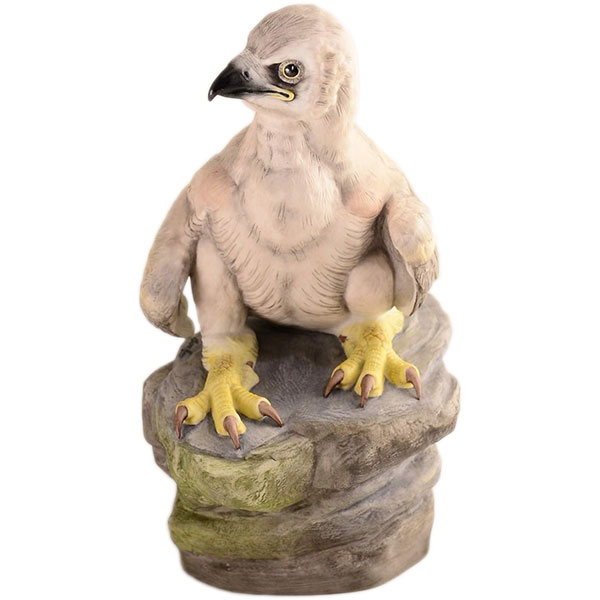
Boehm Young American Eagle
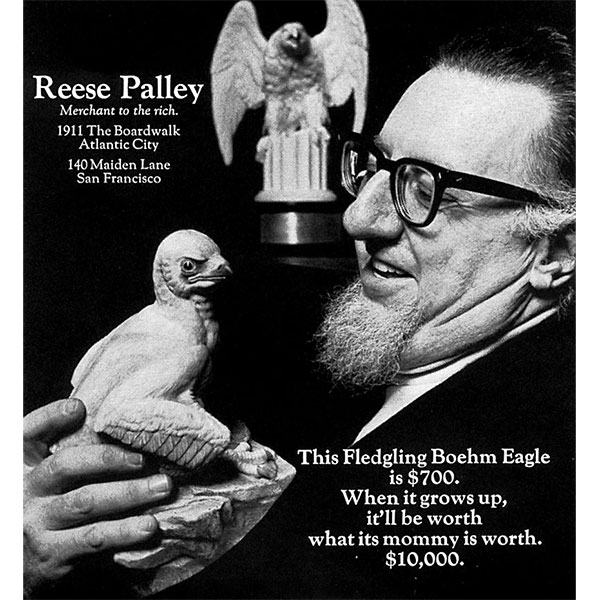
Reese Palley with Boehm Fledgling
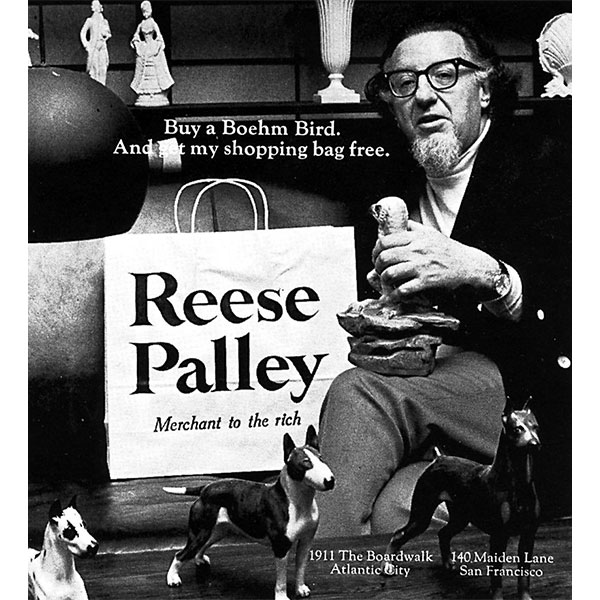
Reese Palley Merchant to the Rich
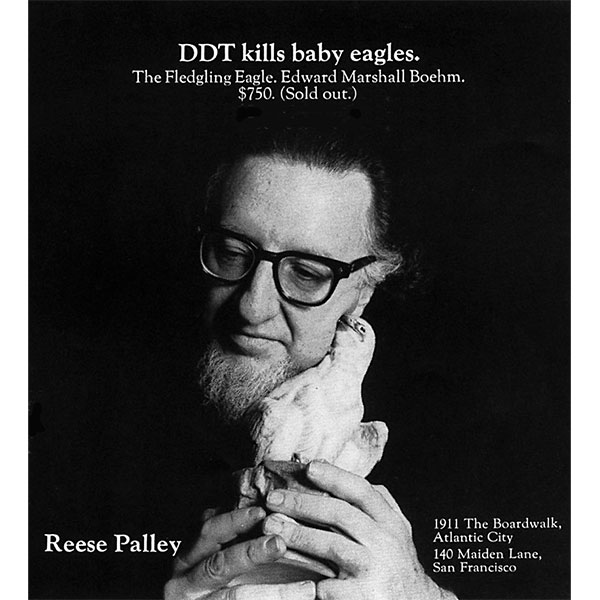
Reese Palley
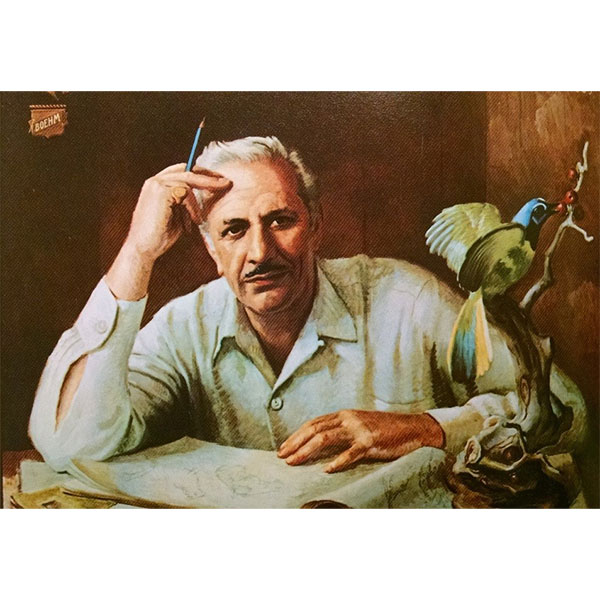
Edward Marshall Boehm
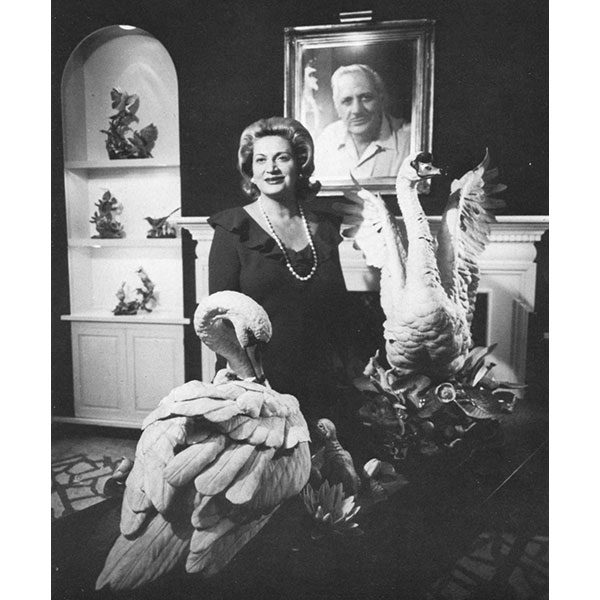
Helen Boehm in the Boehm showroom
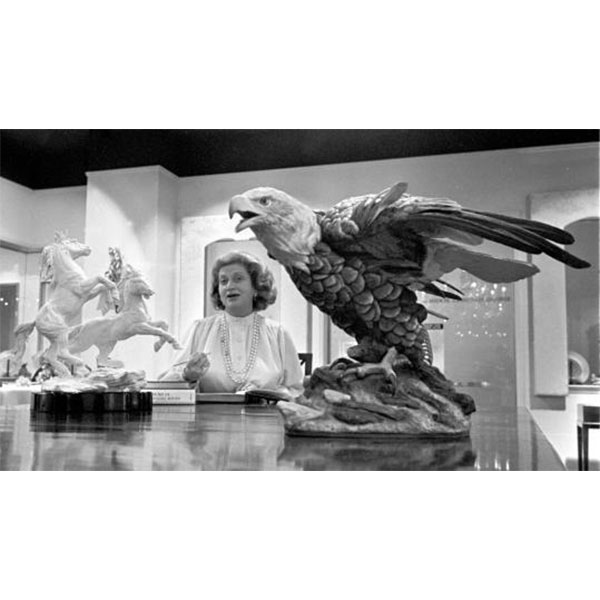
Helen Boehm
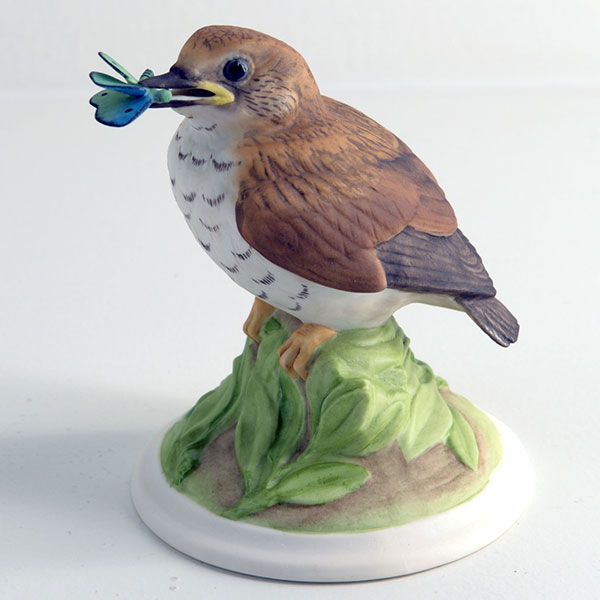
Boehm Baby Wood Thrush
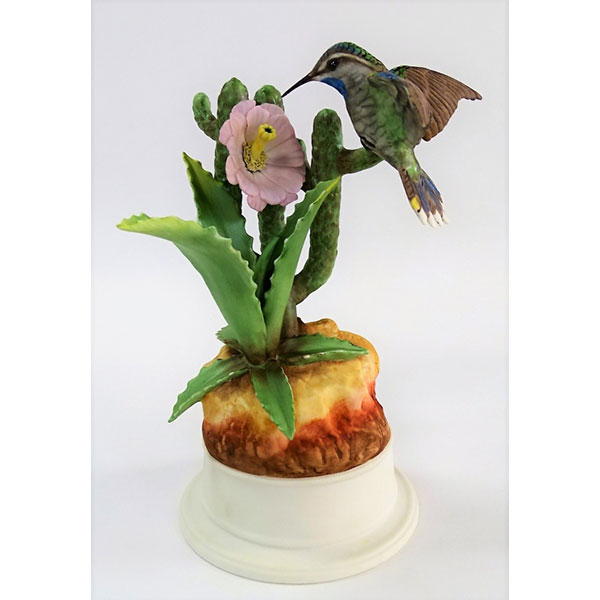
Boehm Hummingbird on a Cactus
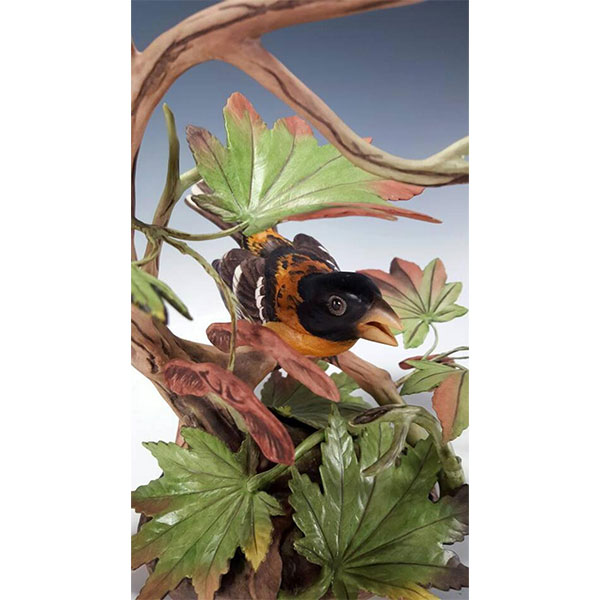
Boehm Grosbeak
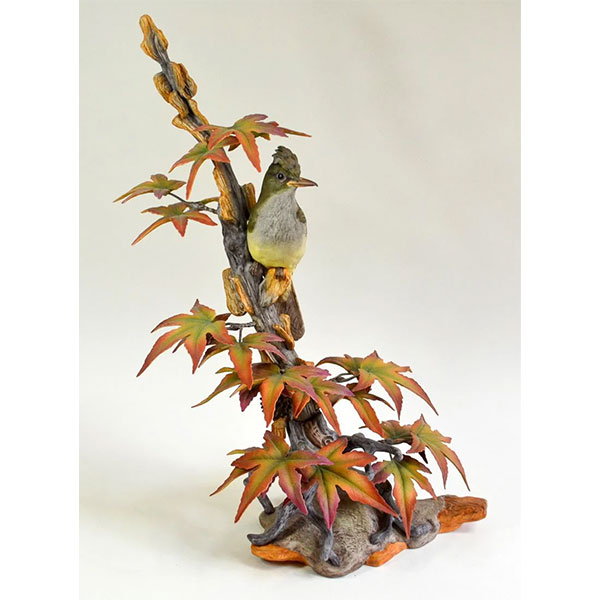
Boehm Crested Fly Catcher
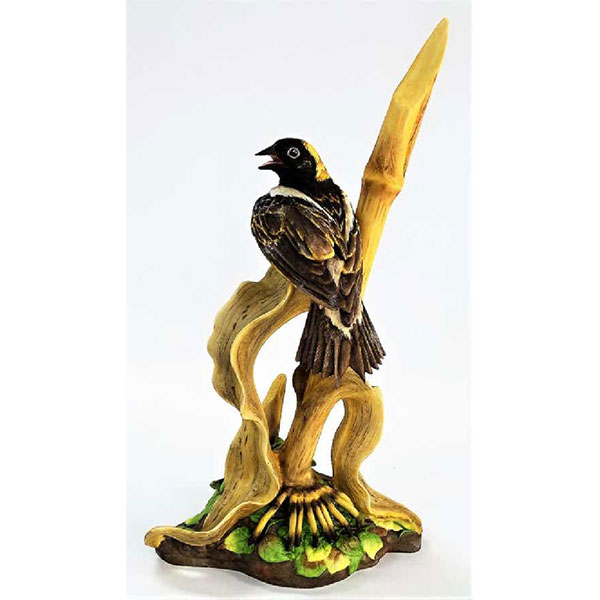
Boehm Bobolink on a Cornstalk
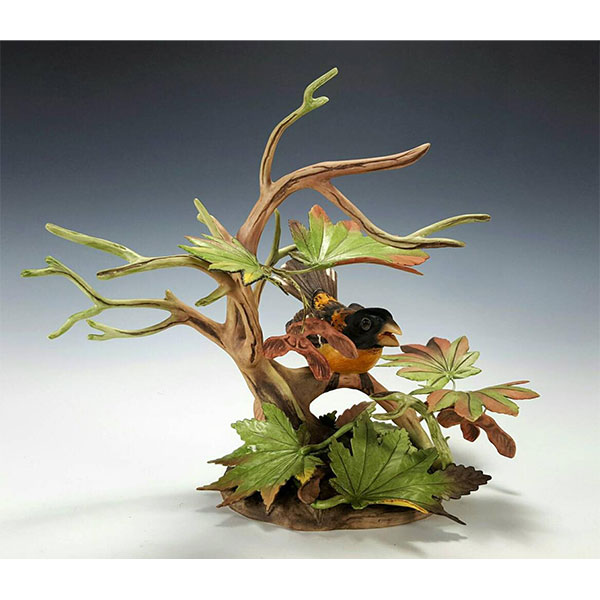
Boehm Blackheaded Grosbeak
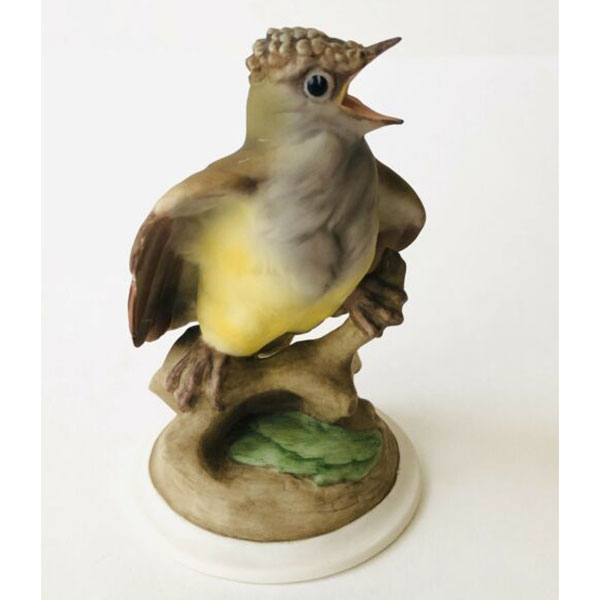
Boehm Baby Crested Flycatcher
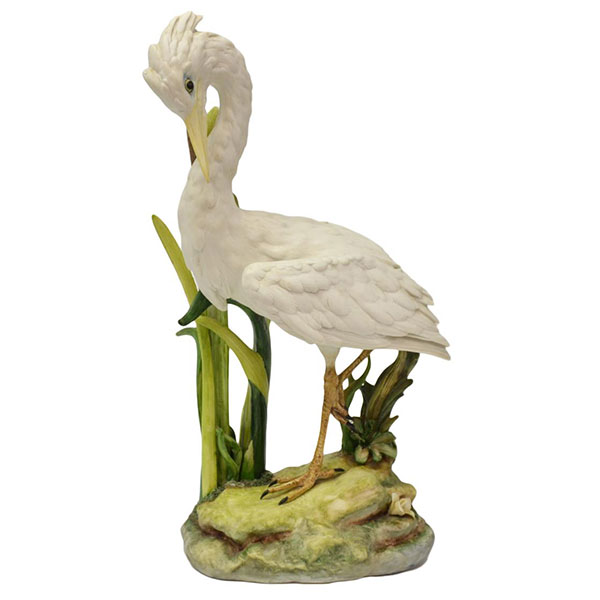
Cybis Heron
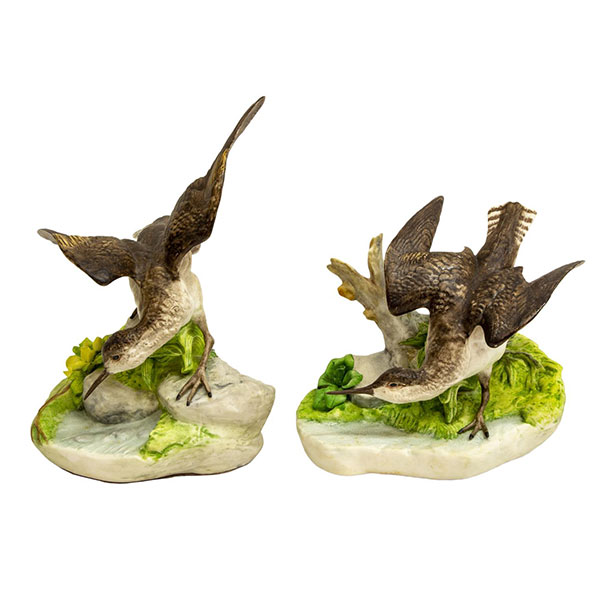
Cybis Sandpipers
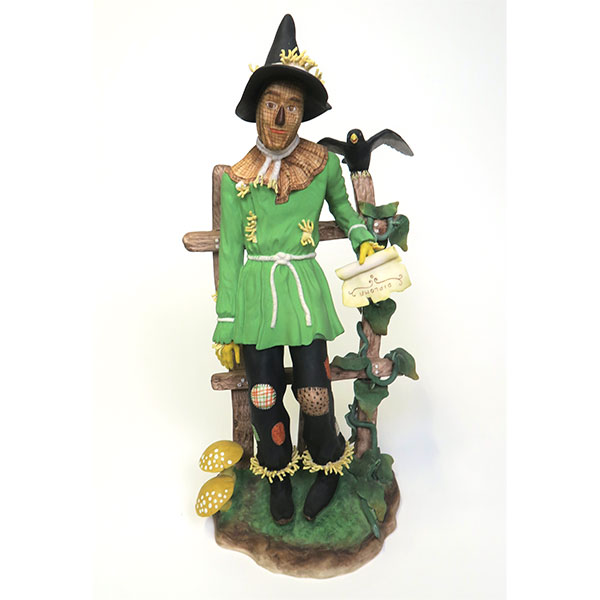
Wizard of Oz Scarecrow by Kramlik
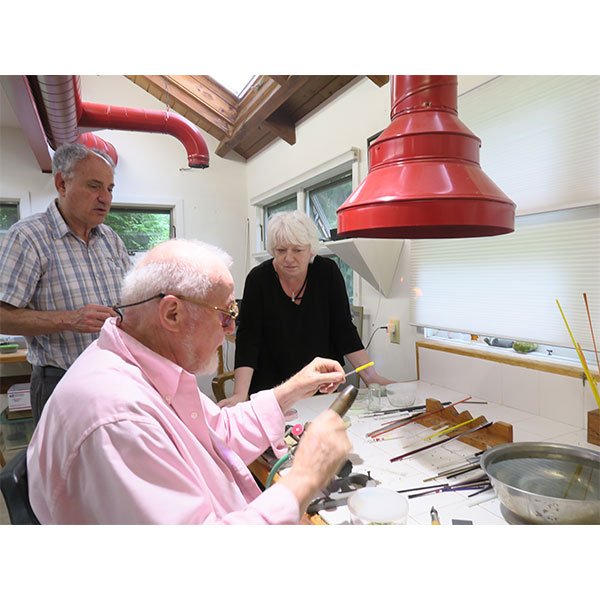
Arthur Wiener and Louise with Paul Stankard in his studio
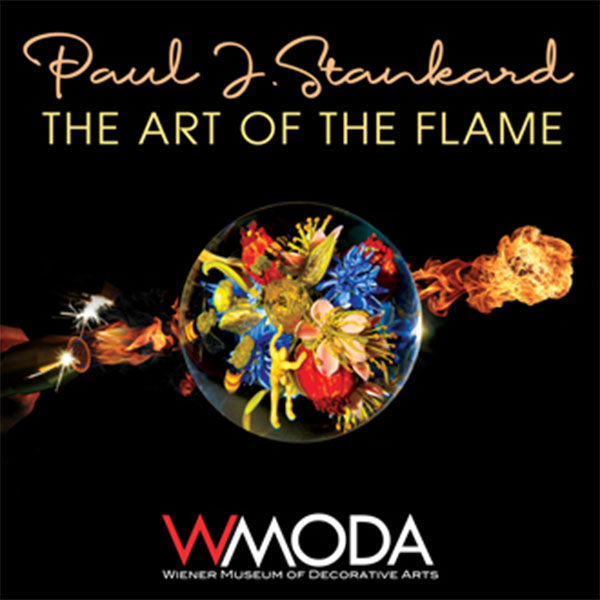
The Art of the Flame
